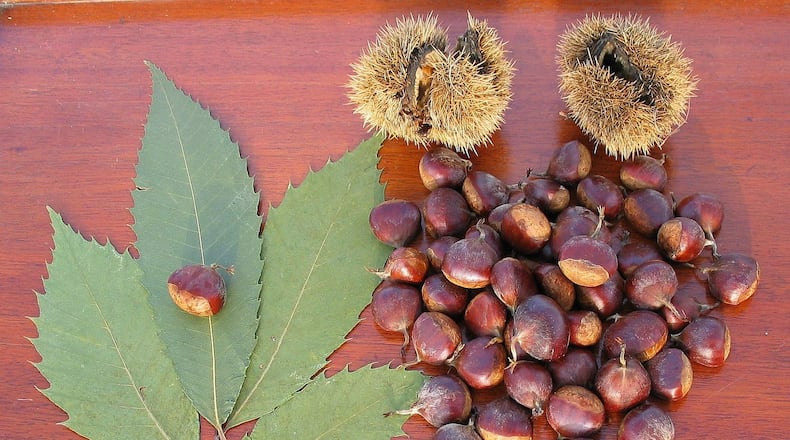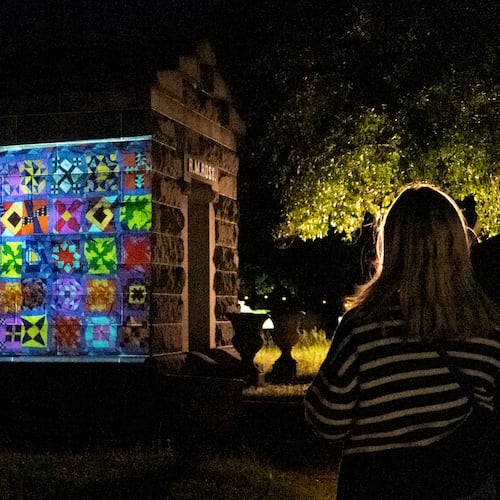Charles Seabrook’s “Wild Georgia” column appears weekly in The Atlanta Journal-Constitution.
Briarlake Forest Park, a remnant of an old-growth forest in central DeKalb County, harbors several majestic native Georgia trees admired for their great ages and sizes.
Now, Briarlake Forest is home to another native tree species, one that has been missing for decades — the American chestnut. Fourteen chestnut seedlings were planted there last week by Friends of Briarlake Forest Park. The hope is that some of the seedlings will survive and also grow tall and strong and reproduce.
That hope springs from eight of the seedlings that contain a smattering of genes from the closely related Chinese chestnut. (The other six trees are pure American chestnut.) The Chinese chestnut genes confer resistance to the deadly blight that wiped out American chestnuts a century ago and is still a killer.
After more than 35 years of laborious “back cross breeding” between Chinese chestnuts and American chestnuts, scientists developed trees with the blight-resistant genes — but which are still nearly 95% American chestnut. Thousands of those trees, grown by the American Chestnut Foundation, have been planted in “demonstration orchards,” such as that at Briarlake Forest and 200 other sites in Georgia.
“But the ultimate goal is to re-establish the American chestnut across Eastern forests,” said Dr. Martin Cipolllini, a Berry College bioloy professor who leads Georgia’s efforts to develop blight-resistant chestnuts. His students raised the seedlings planted at Briarlake Forest.
More than a century ago, American chestnuts were common, the giants of the forests from Maine to Mississippi — growing more than 100 feet tall and 4 to 5 feet in diameter. Wildlife and humans alike savored their sweet nuts. But in 1904 a blight caused by an Asian fungus spread quickly. By 1950, it had killed more than 4 billion chestnuts.
Although blight-killed chestnuts still resprout in the wild, they rarely grow 15 to 20 feet tall before the blight also strikes them. More information: www.acf.org/ga.
IN THE SKY: From David Dundee, Tellus Science Museum astronomer: The moon will be new on Sunday. Venus is low in the west just after dark and sets about two hours later. Mars, Jupiter and Saturn are low in the east about two hours before dawn.
About the Author
Keep Reading
The Latest
Featured

